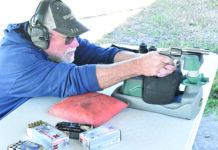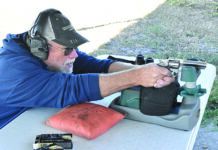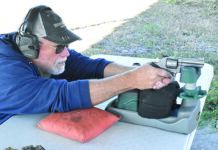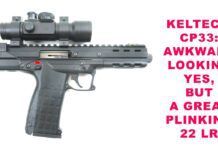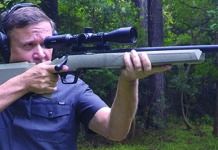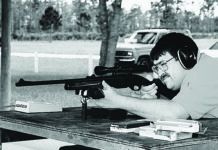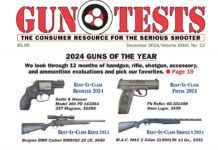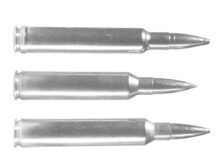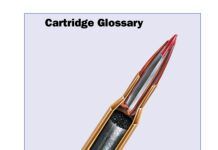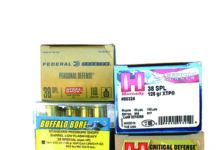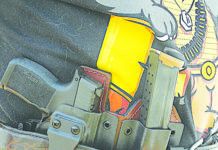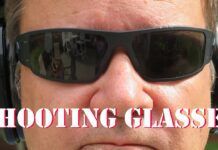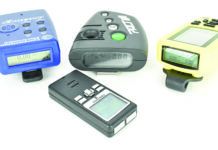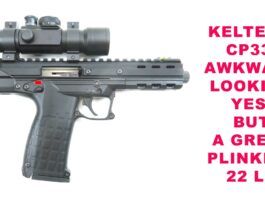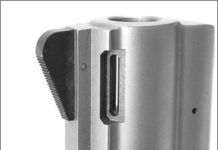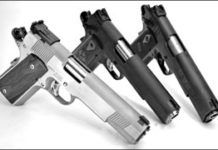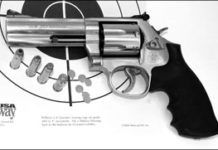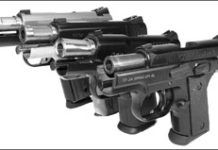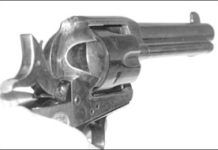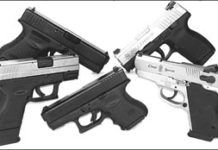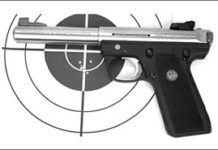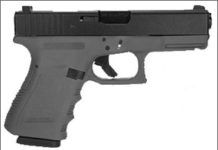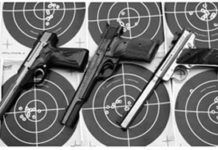9mm Sub-Compacts: Sigarms P239 DAK Earns A-Minus Grade
Porting Earns an A for Better Control of Pistols and Revolvers
Basic 1911 .45s: Dan Wessons Pointman Seven Leads the Way
.357 Magnum Revolvers: S&W Easily Outdoes Czech Import
In our August 2006 issue we reviewed three different .357 Magnum revolvers with 4-inch barrels. The 4-inch magnum is the traditional configuration for the uniformed policeman, and despite the overload of semi-autos now available, the revolver is still a popular sidearm. Each of the guns in our first test, the $615 Ruger GP100, Taurus's $469 M66SS4, and the $646 Smith & Wesson Model 619 were made in the United States.
Since then we have come across a foreign made product that begs comparison to these guns. This was the Alfa Steel .357 Magnum manufactured in Czechoslovakia. We also decided to revisit the Smith & Wesson catalog and test the seven-shot model 686 Plus, catalog number 164194 ($790). Both guns featured a full underlug that enclosed the ejector rod and added recoil-opposing weight beneath the barrel. Each gun offered a ramped front sight with orange-colored insert and a rear sight that was adjustable for windage and elevation. Both guns used a flat-faced hammer and frame-mounted firing pin. Other similarities included finger-grooved grips and counter-clockwise rotation of the cylinder.
Let's see how well this newcomer stacks up against the field.
Pocket 9mm Concealables: Springfield, Kimber Get the Nod
Updates: S&W 22A-1 .22 Pistol; Guerinis Maxum 12 Gauge O/U
We've recently had a chance to shoot two guns one .22 LR pistol and a pricey over-under 12 gauge against guns we've already tested.
In the January 2007 issue, we reviewed Ruger's 22/45 Mark III KP512MKIII .22 LR, $398, and Browning's Buck Mark FLD Plus Rosewood UDX 051429490 .22LR, $417. Since then, we had a chance to shoot the Smith & Wesson 22A-1 107431 .22 LR, $427. Each of these guns featured a 5.5-inch heavy barrel. We shot the 22A-1 head to head against those other guns still in our inventory, and we wanted to update Gun Tests readers on how the third gun fit into the picture.
Likewise, we tested two midrange-price sporting-clays over/unders in the November 2006 issue: the Blaser F3 Competition Sporting, $5195; and Beretta's 687 EL Gold Pigeon II Sporting No. J687526, $5495. Against the two original test guns we pitted the Caesar Guerini Maxum Sporting, $4950, to see how it stood up.
Here's what we found:
A Fine Brace of .38 Cowboy Six-Shooters: Daly Beats AWA
Cowboy Action shooters might well consider choosing a .38 Special for their activities if they have even the slightest trouble with recoil from the .45s. Recoil recovery plays a big part in Cowboy competition, speed being mighty important for best scores. We tested a few other .38 Special/.357 Magnum single actions recently, and here we have two more. These are the American Western Arms Ultimate 1873, all blued, for $600, and the Charles Daly 1873 Standard Model, $460. Both have 5.5-inch barrels, and both are made by Pietta in Italy. There are similarities, but the differences are plain to see. Here's what we found.
Big-Bore Sub-Compacts: We Test a Quintet of Good Guns
Heavy-Barrel .22 LR Pistols: Buy Brownings Buck Mark UDX
Best Tested Firearms: Pistols
Best Tested Firearms: Revolvers
Ruger lists seven different models in the GP100 family with barrel lengths of 3, 4, and 6 inches. Finishes are either blued or stainless steel. Manufacturer's suggested retail prices range from $552 for the .38 Special +P only models to $615 for the stainless steel .357 Magnum revolvers with barrel lengths of either 4 or 6 inches.


